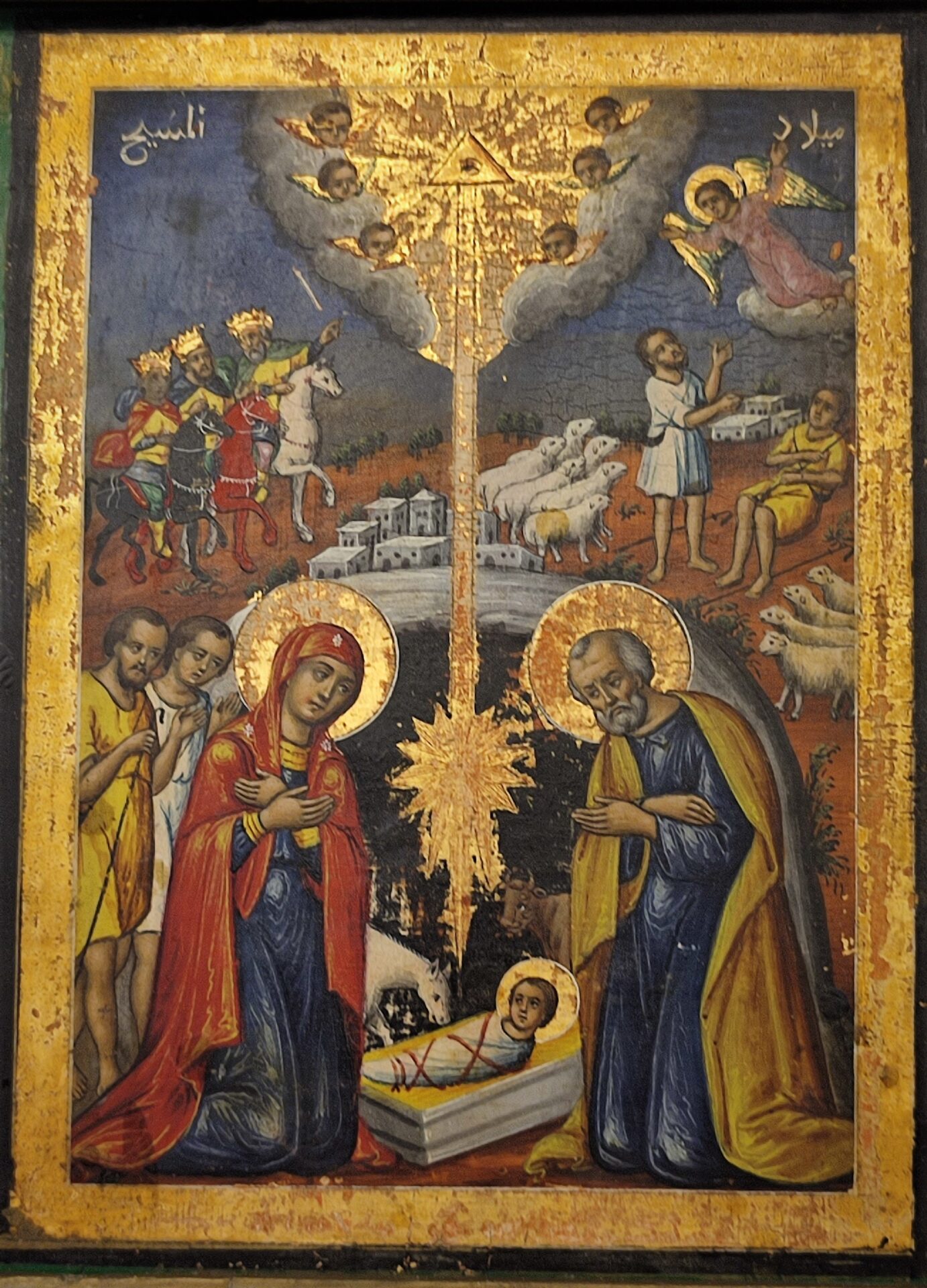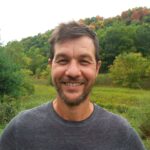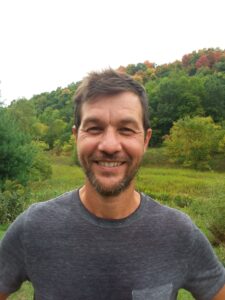“They are playing around with the sacred fire of the sun, making it into atom bombs.”
-from “Lame Deer, Seeker of Visions”
I like peeing outside. Regardless of the weather, it gives me a few moments to pause beneath the sky and notice what’s beyond our home—some deer down by the creek or owls hooting from the far hill or the moon’s phase or Elon Musk. We don’t have plumbing, so it’s a regular rhythm of our days.
Sometimes we come back inside with a report. “Did you hear the coyotes?,” or “It’s starting to rain,” or “I saw another shooting star—what’s that meteor shower we’re in?” or “It looks like Elon’s sending up more satellites again!”
Often, if it’s a particularly beautiful sunset or starry sky, others will come outside, and we’ll gaze together. But tonight, when we’re all cleaning the kitchen after dinner and I call out for everybody to come see another Starlink launch, Adrianne just keeps doing the dishes.
To me, there’s something thrilling about watching that line of satellites—all spaced equally apart, moving in a line at the same speed, a caterpillar constellation crawling across the dark heavens. I also find it terrible, the Babylonian-sized folly of one more foolish king in a long line of foolish kings. But part of the terror is that the string of lights is so awe-inspiring. Even if their shine is only the reflection of sunlight, that line of devils up there makes it seem like humans have created something akin to stars—that’s the bodily feeling I get. Of course I’m trying to raise my kids right, so I talk a lot of smack about Elon and our techno-obsessed culture as we gaze, but a part of me is lost in the rapture of it, too.
Not so for the mother of this house down here on earth, in this little hollow east of the Mississippi River, living at the height, and hopefully the end, of the Machine Age. She ignores my kids’ calls to her to come and see. Like a long line of mothers, like other mothers we know, she has no patience for those tower-building men. Elon’s satellites be damned. We live among a light much greater than tower-builders can perceive, and anyway, there are dishes to do, a floor to be swept.
There’s another kind of light, and you can see it from some burial mounds that stand among the ridges and valleys where we live, built by long-ago ancestors of the land here. Few people know of their existence.
The mounds were built on a ridgetop, and if you stand there and look west, you’ll see in the distance another ridge running across the middle of the valley. At the crest of the far ridge, the soil has worn away a section, exposing a rock wall made of sandstone. Within this wall is a hole, and gazing from the mounds on the Winter Solstice across the valley, the sun sets behind the distant rock wall, then reappears within the hole—a flaming light filling up stone like a god in a tomb—before it sets for good on this natural feast day.
In aligning these three dimensions—their mounds with the rock wall with the Solstice sun—these long-ago peoples made a constellation of ceremonies: the Winter Solstice, a significant cosmic event for people living seasonally within the natural confines of light and dark; mounds containing the bodies of deceased loved ones, each life and each death significant for the community; and a rock face, an element of the local Creation, a rare above-ground utterance of the geology that is below the ground here, dwelling in darkness.
This elegant marrying of natural forces and human ceremonies is hard to contain within the mind. So many mysteries—life and death, dark and light, stone and sky, winter and summer, above ground and below ground—meeting within a trinity of points at a single moment; layer of reality upon layer of reality until the rational mind surrenders and one can only gaze at it all like religious art come to life, or as the life that is actually behind religious art.
It’s massively complex and yet so simple—mounds, a rock wall, a moment of light—all of it harmonized into a ceremonial melody: the hymns of earthly bodies entombed to be in tune with the rhythm of our primary heavenly sphere, this holy song playing toward the climactic, annual moment when a circle of fire—the one that feeds all life on earth—descends into a rock tomb, goes silent, then reappears within the tomb roaring with light, then sets silently again as that unimaginable mass of energy does each day; but then in the coming days, slowly increasing its time in the heavens, its time among us, its light growing, days becoming longer, and with this increase the slow emergence of the souls of the earth—the animals coming out of their tombs of hibernation, the sap resurrecting in the trees, then the pasque flowers, the plants and the whole grand symphony of Creation that these people surely followed within their own rhythms, that these people must have understood in some way relating to what is happening to their ancestors, now buried in those mounds, whom they aligned with all of this—and so with themselves. And maybe even with us.
It’s not understandable, only sensible: the whole of the ceremony of Creation in a moment. So simple. So complex. Time and space and every element of this holy realm condensed to appear as a cosmic fire in an earthly stone, visible by standing on a hill of ancestors.
At least that’s how I imagine it all, which today is all I can do, because this constellation has been decimated. Decades before Elon’s satellites, some techno-obsessed folks, regular folks like me, blew a hole through the mounds site to build a highway. To experience the alignment—much less to relate with or honor any of the bodily-spiritual realities it fed, expressed, nurtured—one would have to stand in the air forty or fifty feet above the highway, which is impossible.
So now we are blind and cannot see any of it. Our techno-obsessed culture blew it, blows and will blow it again: blowing holes through land-based peoples and cultures, blowing holes through Creation, blowing holes through the body of spiritual reality itself, so that we can’t see anything. We don’t know where we walk, or that when we’re driving that highway at 60 miles per hour, music blasting, we’re driving through a spiritual hole our culture blew through the land.
We can, however, see other things. For instance, satellites in the sky, bringing internet to all mankind. Sure we had to make a few sacrifices to launch those up there, but such is the nature of progress, and well worth it, don’t you think?
It’s that time of year again when many of us celebrate the descent of light from the heavenly spheres into the world; the birth of light in a cave pointing us toward the death of light in a cave and the resurrection of light, ongoing, over and over, cyclical, never-ending; a light we dwell within each day, that comes and goes but always comes again; that walks as we walk, dies as we die, resurrects as we resurrect, light made light by light.
On this year’s Feast of the Nativity of the Light in Our World in the Age of the Machine, my prayer is this: may our ceremonies not be one dimensional, but simple and complex constellations of God who dwells among us in so many ways, within layer upon layer of reality, not comprehensible but fully experienceable, beyond our categories of thought but within the bodies of Creation. And as always and ever shall be, may our ceremonies be in defiance and defeat of the fake light made by the tower-builders who dwell here in holy Creation. And may they someday see the real light, too. And may we.
Merry Christmas!





4 comments
Graham Pardun
Joseph, this essay was wonderful — thank you!!
Joe Orso
I just received this story by email today and I’ve already read it twice. Beautiful writing, great storytelling
Joseph orso
Thanks, Uncle Joe. ; )
Zachary
A wonderful meditation for this solstice morning. Thank you for sharing your thoughts with us Mr Orso and please keep contributing to FPR.
Comments are closed.